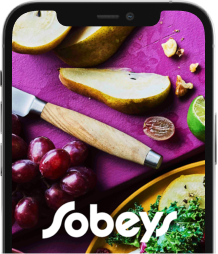With a little time and planning, braising and stewing are both ideal slow-cooking methods for beef – and we have some helpful tips to help you use them both to bring out the best in your dishes.
Known as combination cooking, both braising and stewing incorporate pan searing in fats and simmering in liquids to help tenderize traditionally tougher cuts of beef used, while also maintaining their moisture. Although the cooking method is similar for both, there are some differences between them that are important to understand before exploring tips and helpful information on each.
Braises are used for larger pieces of meat and the liquid is used to cover 1/3 of the meat while cooking. The meat is cooked separately from other ingredients, seared first, finished in the oven, and removed from the liquid before serving. Stews are used for smaller pieces of meat which are completely covered in liquid while cooking. They are cooked along with the other ingredients (typically vegetables), served in their own juices rather than being strained, and cooked either in the oven or on the stovetop.
While the key to success with both methods is allowing the meat to cook slowly and not rushing the process, understanding the subtleties and unique qualities of each will help you enjoy the delicious benefits to the fullest.
Braising: what it is, tips and tricks
Braising is typically used for large cuts of meat such as pot roasts or brisket, produces delectably tender beef when done well. The first step is searing your beef in a small amount of oil in a heavy pan or Dutch oven to achieve a browned exterior before adding a small amount of liquid and cooking, covered, over low heat for several hours. This can be done on the stovetop or in the oven – just be sure to keep the temperature low enough that your braise never reaches a boil. This will keep moisture at a maximum, sealing in the juicy flavour.
No matter what cut of meat you are braising, it’s important to avoid over-cooking it, which can lead to toughness. Try removing the meat from the oven or stovetop as soon as it is “fork tender”, then let it rest in the juices to re-hydrate. Follow this step with a final touch to round out the flavour: remove the beef from the braising liquid, place the pan on the stove over medium heat and reduce the sauce. Once it is reduced by half, add butter to the sauce, simmer together, and return beef to pan.
With any braise, it’s important to avoid lifting the lid during the cooking process, which releases valuable heat and moisture and can lead to increased cooking time.
Ready to give braising a try? Try this French Onion Pot Roast. This is perfect on a cold winter’s day and takes you to a cozy French bistro with loads of caramelized onions. Or give this delicious take on a Beef Bourguignon a whirl for your next Sunday family lunch. Served with creamy mashed potatoes and cooked vegetables or a crisp green salad, it’s the perfect way to while away any weekend.
Stewing: what is it, tips and tricks
Stewing can be your go-to when you want a hands-off way to get a delicious meal on the table. A dependable, slow-cooking method that’s great for those comfort food favourites, stewing varies from braising in that the beef is fully covered in liquid while cooking. For best results, use a heavy stockpot, Dutch oven or slow cooker. As with braising, the key to a delicious stew is letting it cook slowly, allowing time for the flavours to reach their peak and the meat to fully tenderize. Generally, an ideal stewing time is about three hours if cooking on the stove and at least four if cooking in a slow cooker. To really maximize the flavour, sear the meat over high heat before cooking to add richness. Sear it just enough so the exterior is nicely browned but remove from the pan before the meat starts to simmer in its juices. It’s at this point in the cooking process that you’ll want to add any spices, so they release the most flavour.
Another benefit of stews is that they are extremely flexible! Get creative and pick your favourite vegetables to go along with the beef. Just be aware that different types of vegetables should be added at different times throughout the cooking process to maintain their ideal texture. Root vegetables such as potatoes and carrots can be added at the beginning because they take longer to cook but wait until near the end of the cook time to add more tender vegetables.
And as with braising, it’s important to avoid lifting the lid during the stewing process so you don’t release valuable heat and moisture add to the necessary cooking time.
Ready to try your hand at stewing? Here’s a classic Quick One-Pot Beef & Potato Stew to get you started or go gourmet with this Beef & Mushroom Stew with Blue Cheese.



